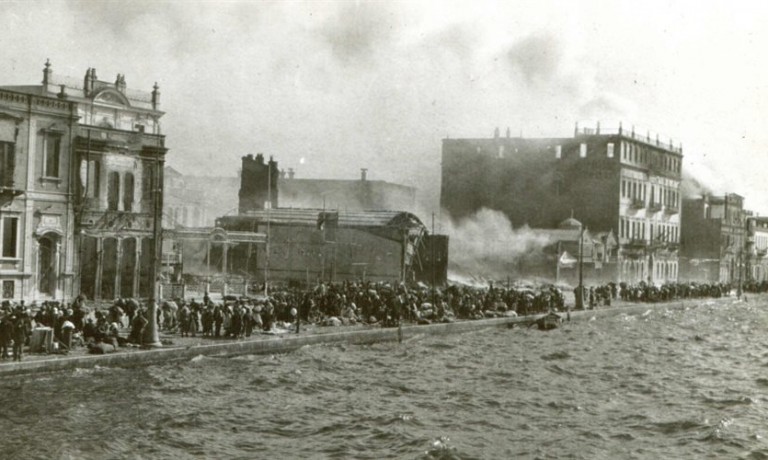The end of the first half of September, marks a grim anniversary in modern Greek history, as it is 102 years since the start of the burning of Smyrna, a port city (Izmir) on the western coast of modern Tukey on September 13th.
The fires, set by the advancing Turkish army entering the city—with the first to arrive being the irregular Turkish cavalry called Tsetes—after the remaining Greek forces boarded ships to evacuate to mainland Greece following a failed military campaign, lasted, according to some eyewitness accounts, until September 22.
The destruction of much of the city of Smyrna in September 1922 is etched deeply in the Greek psyche. Popular, sorrowful songs capture the lament for those who were wantonly killed by the advancing Turkish forces.
Until that day the city was destroyed, Smyrna had a population of 270,000 people, of whom 140,000 were Greeks, 80,000 were Muslim Turks, and 20,000 were Jews. These different ethnic groups had been living there for millennia.
The burning of Smyrna (Smyrna Catastrophe, as it became known in Greece) was the culmination of the war between Greece and Turkey, which lasted from 1918 until 1922.
The failed 4-year military adventure in Asia Minor resulted in the uprooting of millions of people during the population exchange between the two belligerent states. In the fall of 1922, approximately 55,000 Armenians and 1,250,000 Greek refugees from Asia Minor, as a whole, arrived in Greece.
It is estimated that the Asia Minor campaign resulted in 25,000 dead and wounded soldiers on the Greek side. Some researchers put the number of Greeks forced to abandon their ancestral homes at over 1.5 million, leaving behind over 600,000 dead.
The Turks under Mustafa Kemal, the leader of a secular group called “The Young Turks,” aimed to erase every Greek presence from Asia Minor, committing unspeakable crimes as documented by Western eyewitnesses, including massive arson of buildings and people, rapes, massacres, executions, and torture.
American witnesses recount stories of sick individuals being burned in hospitals and children set ablaze in schools. According to the correspondent for The Times of London, many Christians were burned inside their churches, as they sought refuge there, only for the Turks to deliberately set them on fire.



